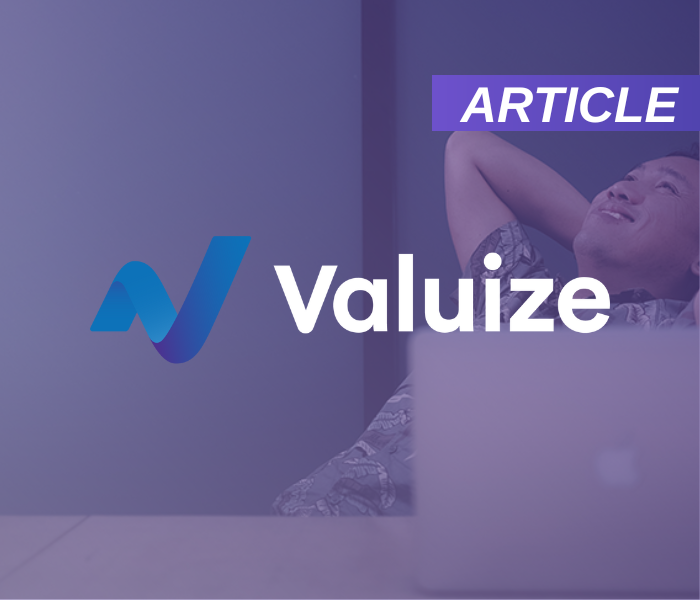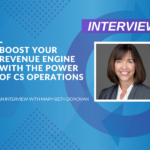Customer success technology is one of the breakout tech categories that has emerged over the past 5 years. The rise of the customer success ‘domain’ in B2B software companies has driven this new market category.
Most B2B software companies have now made attempts to build Customer Success organizations, and their focus has shifted to increasing the efficiency, scale and impact of these teams. Investing in customer success technology has been the knee jerk reaction by many Customer Success leaders looking to make these leaps.
This reaction is understandable. Customer Success leaders have desperately been looking for an alternative to the combination of spreadsheets and software designed just for Sales teams. These leaders have been made giddy by promises from customer success technology vendors alluding to career-defining levels of customer adoption, retention, expansion and advocacy if they just buy the vendor’s solution.
The promises made by customer success technology vendors have come true for many of their customers, and they can come true for your business…if you take the right approach to selecting then adopting the technology. Successful adoption begins with evaluating customer success technology to find the best option for your organization. Investing in the right tech begins with having a solid evaluation criteria for your selection process.
The fundamentals of evaluating customer success technology
First, you need to understand what defines a customer success platform. This type of integrated application provides a 360-degree view of your customers’ profiles, pulling in data from other applications that have specialized detail around your customers’ experiences and interactions with your business. This may involve email, support tickets, software/platform usage data, contract details, invoicing or payment details, surveys, marketing engagement and more.
Customer success software often offers additional layers of intelligence, such as combining various insights into health scores and profiles. The goal here is to provide your post-sales teams with a prescriptive approach to servicing their customers, and create a proactive culture of retention and expansion.
With numerous options available today (Gainsight, Totango, ChurnZero, Amity, Natero, ClientSuccess, CustomerSuccessBox, UserIQ, Bolstra, PlanHat, StrikeDeck, Akita, Catalyst and the list goes on), it can be confusing to determine where you should start with your evaluation.
Here are the top 6 categories that we recommend you focus on when evaluating customer success technology:
1. Team structure
Leaders who are new to customer success technology often go into the evaluation process expecting the software to service only their customer success managers (CSMs) or equivalent. The reality is that these platforms are designed to help power all post-sales teams, such as onboarding, renewals and professional services. Most have cross-collaboration features to provide key customer insights to other teams, such as sales, support and marketing. We’re now heading towards being able to consider true cross-collaboration with customers, too.
We recommend a “crawl, walk, run” approach when onboarding multiple teams in your organization on to customer success tech. However, keep in mind that you will likely want to move more and more teams onto the platform down the road.
2. Data integration
Customer success technology is only as good as the data it’s fueled by. Be sure to understand the ‘pre-built’ data integrations the technology has into your data sources that contain relevant information for creating and uncovering insight about your customers. Examples of these data sources include your CRM, support ticketing, invoicing, marketing automation, revenue management and product usage/engagement systems.
From there, consider the API flexibility of the customer success tech to integrate into systems that the vendor may not have an existing integration for. Last but definitely not least, consider how easily you can integrate your own platform’s data points into the system. You must also understand the data security capabilities and certifications held by your customer success technology vendor.
When discussing available integrations, ask yourself where and when a 2-way or bi-directional integration is required. For example, if your CSMs should only have view access to support cases, perhaps the existing integration with your support ticket system is sufficient. This is a great opportunity to ask why you need each integration, what it would mean in your process and to identify what assumptions you may need to forget about. Any bi-directional integration discussions should include the administration and operations teams for those systems.
3. Segmentation
It’s crucial to have flexibility to organize your customers into actionable segments within your customer success technology. This takes the concept of portfolio management to the next level, providing your CSMs with automated and dynamic views of their book of business.
Consider how much wiggle room you have in creating these segments, and how much control you can give or restrict for your CSMs. These segments can further drive your ability to use automation more effectively.
4. Automated triggers and playbooks
This is where the magic really lives in customer success technology. Using event-based triggers, you should have the agility to create a truly prescriptive approach for your CSMs to manage their day-to-day. The end goal here is efficiency so that CSMs can stop wasting time doing menial tasks and spend more time with customers. These triggers can be based on any number of integrations or contract details (e.g., time-based renewal notifications). These can often be grouped into playbooks or a specific series of tasks automatically assigned based on the criteria you set.
Consider the ease or complexity of creating these playbooks in the UI of the customer success tech. If you want to see a particular playbook in action and you’re able to request a proof of concept or example, ask your vendor for this. Some vendors offer more options than others when it comes to run or sync frequency to create an almost real-time experience.
5. Health scoring
Even if you don’t have some form of manual or Excel/Google Sheet health scoring system today, you will definitely be taking advantage of this feature as time goes on. Get a head start on understanding the customer success technology’s health scoring models/structures, and its flexibility to create different profiles based on various segments.
Consult with all of your post-sales leaders to get their varying perspectives on what makes a healthy customer, and try to think about health as varying based on a customer’s lifecycle stage.
This is a fantastic opportunity to determine where automated scoring can come in handy to take precautionary measures and behave proactively rather than reacting to a negative customer experience.
6. Ease of implementation and administration
Some customer success technology requires more heavy lifting when it comes to implementation and administration. The expertise and effort required does not always directly correlate with the depth of power and capabilities of the technology.
The breadth and depth of your organization’s functional requirements for the software will drive the level of expertise and effort required. These requirements must be accurately based on your current and planned design of your customer success strategy. Just because one customer success solution was ‘simple’ to implement in your last organization doesn’t mean it will be straightforward in your current company.
It’s essential to understand how much of a lift the implementation and ongoing maintenance will be for your team. Ask your vendors for references and read reviews to get a sense for whether you need a full-time administrator(s) or if the platform can be run by a fractional resource.
Examine this from a holistic truth perspective, rather than learning toward the cheapest option. Many organizations have avoided the reality of the administrative and operational requirements of customer success technology only to end up with a system that hasn’t been kept up to date with their company’s changing needs.
Make the smart decision
Use these 6 customer success technology evaluation categories to determine not only what ROI you can plan for your new technology to deliver, but also how you expect to get there. Evaluating customer success technology is only the first step. Next comes planning and executing your implementation. If you’re looking for guidance around this, Valuize can help. Get in touch with us.






